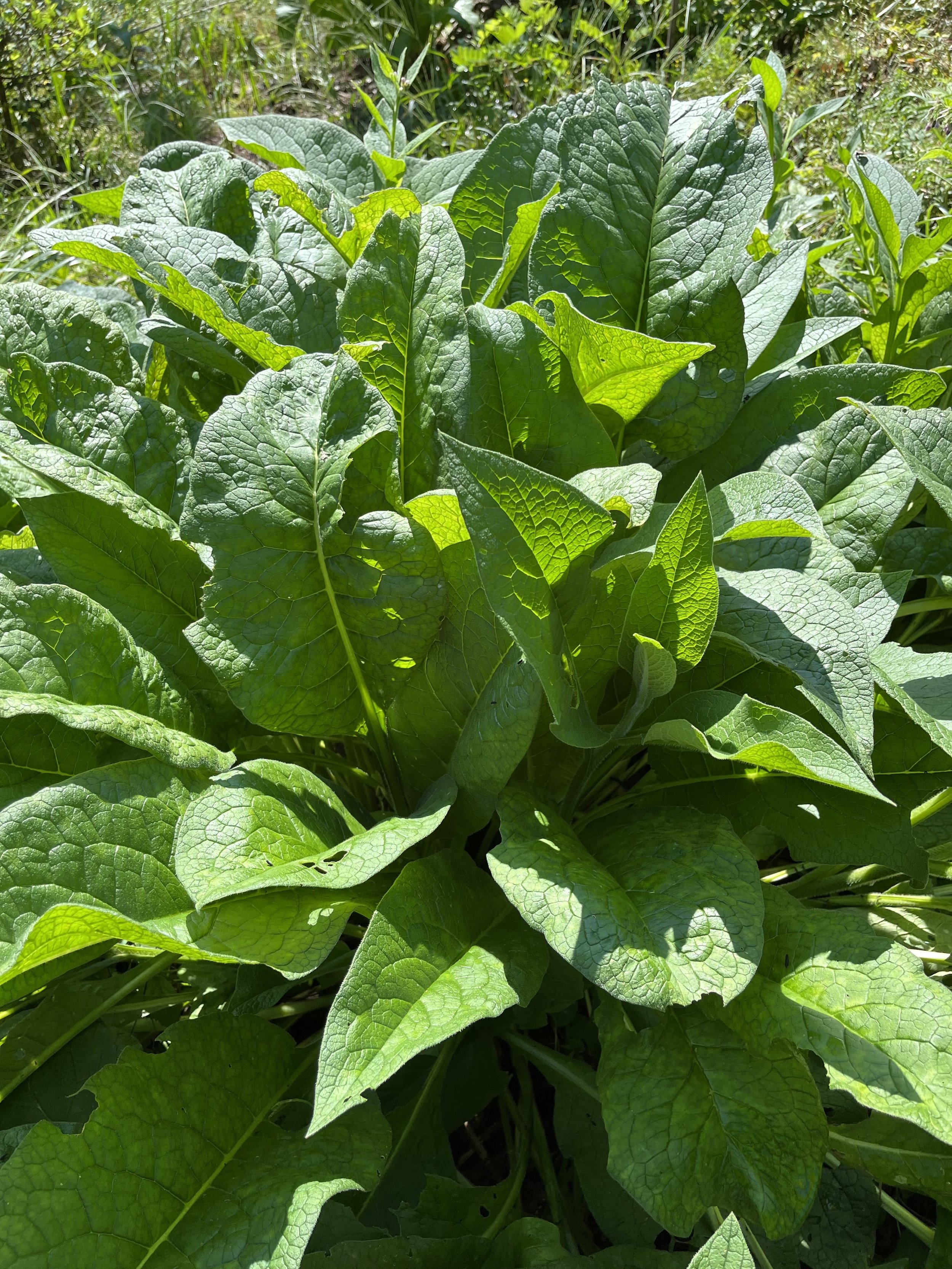 Image 1 of 2
Image 1 of 2

 Image 2 of 2
Image 2 of 2



Comfrey
Symphytum officinale
4 or more root fragments/crowns for propagation
Comfrey is one of the easiest plants you can grow and provides abundant mulch for the garden. It has a deep, extensive root system and has a reputation for being a dynamic accumulator, bringing minerals and nutrients up from the soil and storing them in its leaves. Bees also love it! We cut this plant many times throughout the season and use the leaves for mulch. We also let it flower for the bees and use the leaves for making salve and for adding to our AACT (Actively Aerated Compost Tea). This comfrey was given to us by a gardener friend. It is not the creeping kind and does not make viable seed, but you still need to use caution when planting because any soil disturbance around the plant will likely stir up root fragments, and when those are spread they will each become their own robust plant. Comfrey is very hard to remove from the garden so plant it where it will not be disturbed and where it can live for a long time.
You will receive at least 4 root fragments/crowns. Comfrey is not fussy about how it’s planted, just bury it in the ground a couple inches down and you should be good.
Symphytum officinale
4 or more root fragments/crowns for propagation
Comfrey is one of the easiest plants you can grow and provides abundant mulch for the garden. It has a deep, extensive root system and has a reputation for being a dynamic accumulator, bringing minerals and nutrients up from the soil and storing them in its leaves. Bees also love it! We cut this plant many times throughout the season and use the leaves for mulch. We also let it flower for the bees and use the leaves for making salve and for adding to our AACT (Actively Aerated Compost Tea). This comfrey was given to us by a gardener friend. It is not the creeping kind and does not make viable seed, but you still need to use caution when planting because any soil disturbance around the plant will likely stir up root fragments, and when those are spread they will each become their own robust plant. Comfrey is very hard to remove from the garden so plant it where it will not be disturbed and where it can live for a long time.
You will receive at least 4 root fragments/crowns. Comfrey is not fussy about how it’s planted, just bury it in the ground a couple inches down and you should be good.